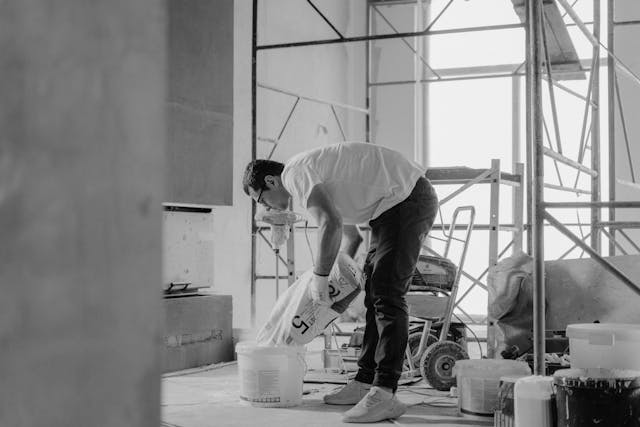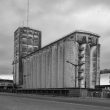Concrete is one of the basic building materials used in commercial building construction, It finds many applications because it offers durability and strength. Although concrete is strong, it often develops defects over time due to various factors. Remedial builders work to address and rectify defects that cause structural problems for its integrity and longevity. The article shows how remedial builders address these common concrete defects, providing an outline of the processes involved in concrete repairs and commercial building maintenance
Identifying Common Concrete Defects in Commercial Buildings
Identifying common concrete defects involved in commercial buildings is very important to the integrity of their structures and, therefore, their safety. Surface problems involve issues like cracking and spalling. In contrast, deeper ones include the corrosion of steel reinforcements. Cracks can seem harmless but point to a more serious problem, such as settlement or overload of the foundation. Spalling, a condition where concrete chips or breaks off, often results from the rusting of rebar inside concrete.
Honeycombing, in the form of voids in the concrete, results from insufficient concrete mix and poor consolidation. Another major defect concerns the concrete cover over the reinforcement bars, which, if inadequate, accelerates its corrosion due to exposure to environmental elements. The remedial builders use a mixture of visual examinations and advanced techniques such as ultrasound and radiography for the accurate diagnosis of these defects. Knowing these common issues, experts could design better repair and prevention strategies to ensure the longevity and safety of commercial structures.
Causes of Concrete Defects in Commercial Properties
The causes of concrete defects in commercial properties are both environmental factors and human errors during the construction and maintenance stages. The remedial builder nearly always comes across such things as insufficient repair times, resulting in deficiencies in strength, or misuse of materials that can cause a poor concrete mix with weaknesses such as cracking and spalling. Other environmental factors, for example, high temperatures, can cause expansion and contraction in concrete to weaken the already weak condition.
Further, exposure to chemicals and other aggressive environments, quite common in industrial settings, can result in accelerated degradation. Commercial building maintenance is therefore very important to contain all these issues, and proactive concrete repairs and regular inspections form part of good property management. By addressing these root causes early through expert assessment and intervention, the remedies done can significantly extend the life and safety of a commercial building, guaranteeing they remain structurally sound and aesthetically pleasing.
Assessment and Diagnosis of Concrete Defects
Assessment and diagnosis of concrete defects in commercial properties involve a structured approach designed to determine the extent and origins of the damage. The remedial builder uses several diagnostic tools or methods to ensure correct and accurate detection and assessment. They range from simple visual inspection, which easily identifies surface problems like cracking and spalling, to techniques that help identify internal problems, such as ultrasonic testing and ground-penetrating radar.
One other significant line of approach is concrete core sampling, capable of delivering detailed information on the mix of concrete, aggregate quality, and curing quality. In commercial building maintenance, such detail in diagnosis is important to guide concrete repairs and preventive strategies. Understanding the nature of the defects allows remedial builders to adjust their approach to ensure longevity and prevent future deterioration.
Remedial Strategies for Concrete Cracks
Remediation strategies for concrete cracks are part of building maintenance Sydney, requiring specialized knowledge and techniques from remedial builders. Depending on the type of crack, its location, and its severity, different methods can be followed. Remedial builders use sealants or flexible polyurethane injections that not only fill the cracks but also allow for future movements without allowing water entry and thus further deterioration in the case of narrow, non-structural cracks. More significantly, structural cracks are then filled using epoxy injections. These come with an excellent repair that holds the concrete at its original strength values and bonding, hence returning it to full structural integrity. These concrete repairs assure the structure’s long-term durability and safety.
Addressing Spalling and Surface Deterioration
The repair of spalling and surface deterioration involves an understanding of the root causes involved and effective strategies for repairing the damage occurring. Spalling is a condition where the surface of the concrete is peeled, flaked, or broken off because of corrosion, freezing, thawing, or chemical exposure that migrates from. Remedial builders deal with this by first removing the deteriorated concrete to expose and treat the corroded reinforcement. One such preventive action is the application of sealants and waterproofing coatings onto this surface, which prevents moisture and dangerous chemicals from dripping into the concrete. Not only do these treatments facilitate the aesthetic appeal of commercial building maintenance, but they also enhance the performance cohesion of the building for structural health, safety, and longevity.
Managing Moisture Issues
Moisture control in commercial buildings seeks to avoid several potential damages to structures, including mold development, material corrosion, and concrete destruction. Precautions concerning moisture management include design improvements, maintenance practices, and remedial intervention measures. Diagnosis of the problems due to moisture usually requires detailed assessment by remedial builders; measurements of humidity and thermal imaging are carried out in an attempt to identify problem areas of condensation.
Solutions generally have to do with waterproofing system improvement, enhancement of drainage, and installation of moisture barriers. In cases of moisture infiltration via the building envelope, remedial builders may dehumidify a process and repair or replace the damaged materials. Another important factor in controlling interior moisture is airtightness and good ventilation. Finally, inspections at regular intervals with required maintenance will help prevent many potential problems before they cause extensive damage and require expensive restoration.
Preventative Measures and Maintenance
The principal measures taken to avoid expensive repairs and provide longevity to structures in commercial building life cycle management are preventive measures and maintenance. Routine inspections and early identification of issues before they become major ones are proactive engagements with remedial builders.
These typically include, but are not limited to, periodic checking and cleaning of the drainage systems to ensure that water does not accumulate, applying protective coatings to exposed structural elements to make them more resistant to environmental wear, and looking out for signs of cracks or spalling on the building façades. Keeping a scheduled maintenance program for all mechanical systems, such as HVAC units and plumbing, also enables one to detect inefficiencies or failures that could cause moisture problems. Effective preventive maintenance not only enhances the safety and functionality of a building but also leads to effective cost savings, which are attained by reducing the requirement for extensive future repairs.
Conclusion
The typical problems of concrete defects that occur throughout the life-cycle stages in a commercial building require expert diagnosis, effective repair techniques, and ongoing attention to repair maintenance. Remedial builders assist in carrying through with directed concrete repairs and strategies for future-proofing the building’s structural integrity and longevity.
Routine inspections of commercial buildings are among the few ways that a long service life can be realized due to state-of-the-art repair materials and knowing the basis from which the deterioration resulted. Such efforts protect physical structure, safety, and functionality, and add value to the assets in commercial real estate.






